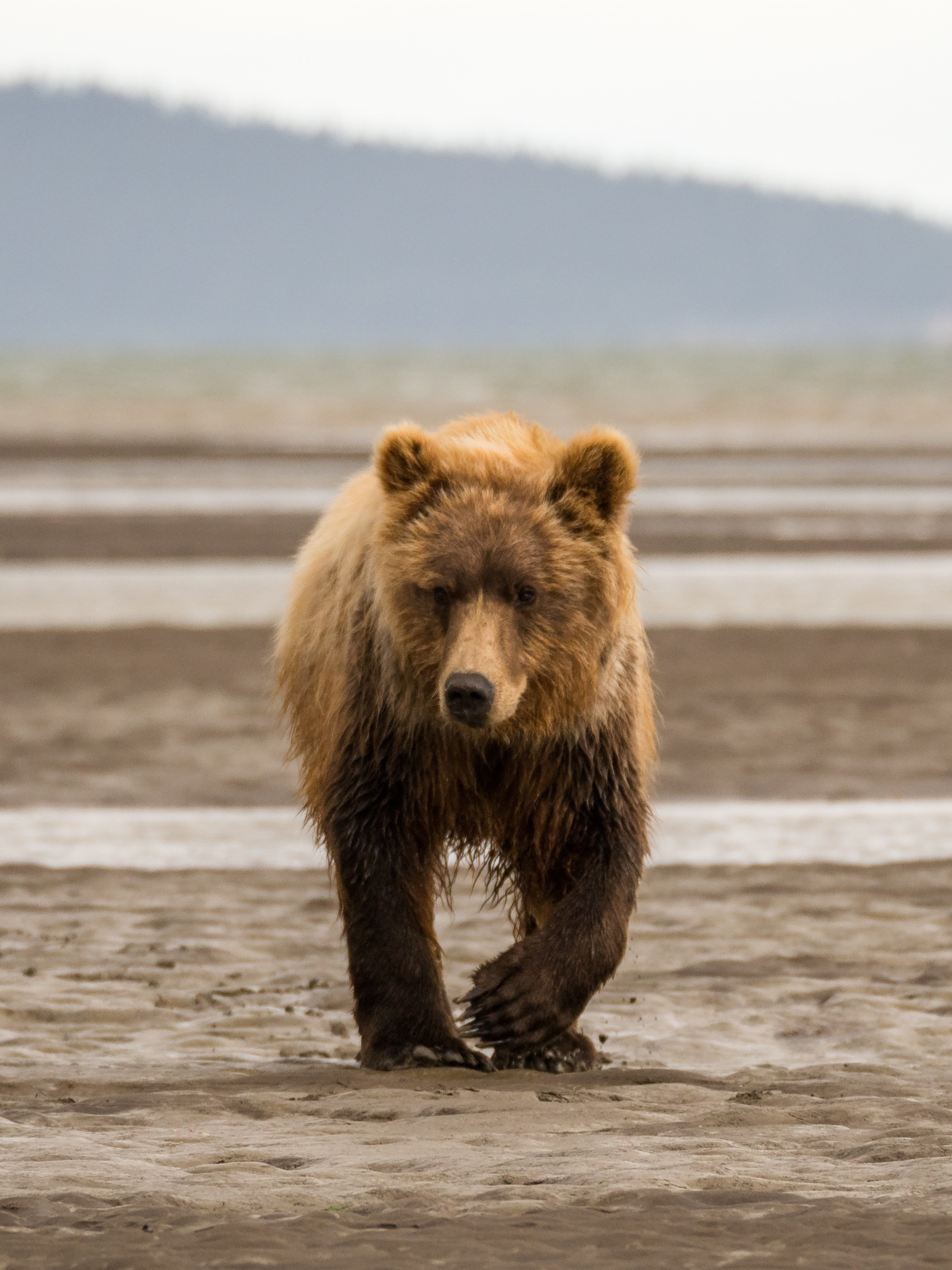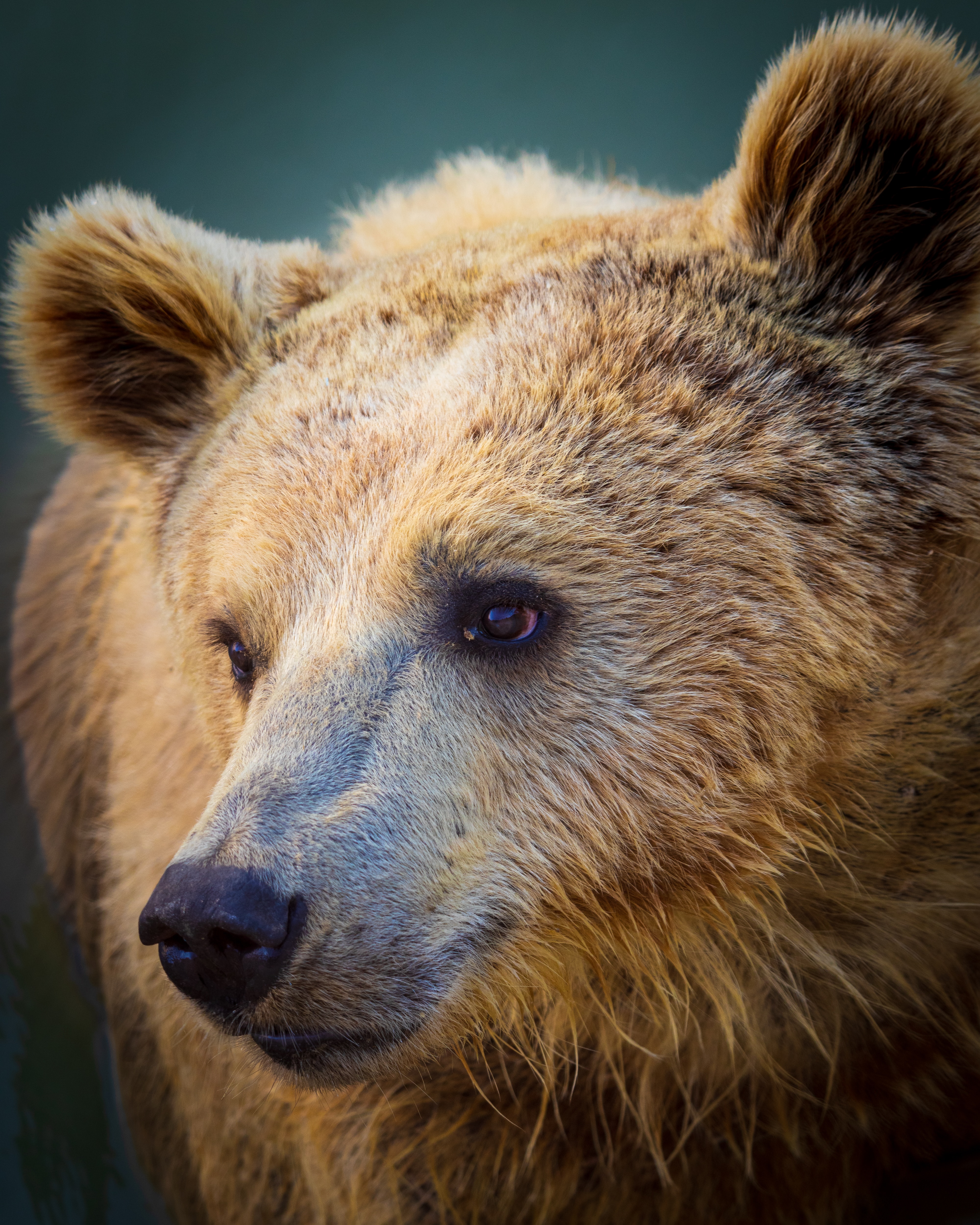Curved claws dig into the ground with each step, moving with purpose towards the running water just yards away. The movement of fish towards
Lake Idryl this time of year means a feast for these creatures before they enter their dens for long months of quiet and sleep. Sharp claws make quick work of fish and other small prey that can be caught in the water, filling a belly full before spending the day in the cool of the water and the shade of the nearby trees.
Dust Bears are common in the lands of
Vóreios, but one should not mistake them for their smaller cousins the
Coaldust Bears. These bears with large fur are often massive, boasting large, curving claws that help them catch fish or scavenge carcasses. One of the largest predators in the north, these creatures are not afraid to push others out of prime spots where the fishing is good or where small animals can be easily preyed upon. Even so, these bears will also forage and dig for their meals when nothing else can be found.
Those who have crossed paths with a Dust Bear are often lucky to have survived. The bears' hulking forms along with their temperament often lead to injuries if not death for those that inadvertently cross paths with the behemoth. Their claws and teeth are honed weapons that can rend flesh just as easily as they can dig for insects and tubers. When asked how to tell the difference between a Dust Bear and a
Coaldust Bear, those with experience tend to say that if you find yourself close enough to tell the difference, it is already too late.
Basic Information
Brown fur does not always mean that a bear is a
Dust Bear.
Spicedfur Bears are similar in color to
Dust Bears but features like claw length, paw size, face shape, and ears will determine the difference.
Anatomy
Dust Bears are large bears, often ranging from four and a half feet to just over nine feet in length and roughly two and a half feet to five feet at the shoulder. Depending on the season and gender, one of these bears can weigh anywhere from almost two hundred pounds to over thirteen hundred pounds. These bears are considered to be one of if not the largest predators in the areas they inhabit, but there are some creatures that are still larger.
Throughout the year, these creatures will grow thicker hair to prepare themselves for the colder winter months where they will often find a place to shelter and hibernate for anywhere from three to eight months depending on seasonal changes as well as the availability of food and whether or not a female bear is pregnant.
These bears have extremely keen eyesight and hearing that allow them to track their prey. While running, Dust Bears can reach speeds of up to thirty-five miles an hour, making them faster than most creatures in
Vóreios. Their large claws are used for catching fish, tearing flesh, and digging for additional food sources.
Genetics & Reproduction
While many confuse
Coaldust Bears and Dust Bears, these two bears are not the same. A variety of features vary between the bears that separate them genetically. That being said, this is a subspecies of the Dust Bear that more closely resembles a
Coaldust Bear in size. These bears are often referred to as "Dusties" as they are often smaller than coastal Dust Bears and somewhat resemble
Spicedfur Bears. Dusties are commonly found in non-coastal areas of the
Northern Continent.
Additional Information
Dust Bears are one of the only species that can be found in nearly every area of the
Northern Continent, including most areas of the
Great Plains. Content to roam across most of the continent, these bears will make their homes in caves or in open areas where the vegetation allows them a somewhat hidden resting spot. They have little preference for places to live, even living in areas near the peaks of the
Spine of Kallex and the
Teeth of the North that others would call uninhabitable.
Populations of these bears have run small numbers of
Coaldust Bears from portions of the
Timbers of the Furnace and the
Great Furnaces, but rarely do these bears become overly territorial unless the food supply is limited. As hunters and scavengers, Dust Bears often do not have a reason to fight over areas with other bears.
Scientific Name
Ursus brunus
Average Height
2 ft 6 in to 5 ft at the shoulder
Average Weight
200 lbs to 1300 lbs
Average Length
4 ft 6 in to 9 ft
Dusties
The greatest distinction between Dust Bears and the ones called Dusties is their diet. Dust Bears that live in coastal areas thrive on a diet of fish and clams, while those that live in interior areas have much more varied diets and more difficulties finding food.
This leads to much smaller Dust Bears that are more aggressive due to differences in diet and the search for food. These bears were given the name Dusties as their smaller size makes them resemble both Dust Bears and Spicedfur Bears.




I love the naming conventions here! Do spicedfur bears smell good?